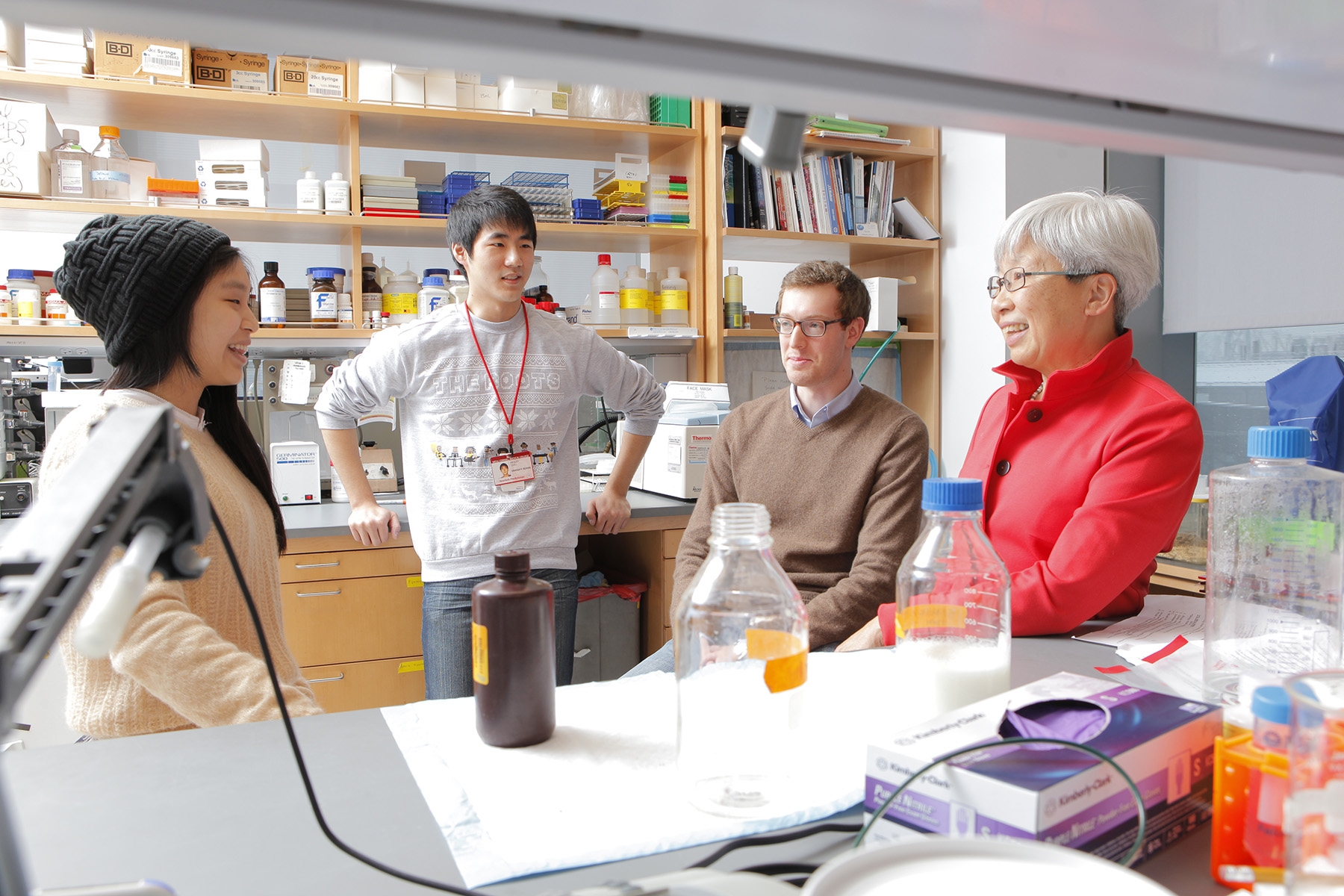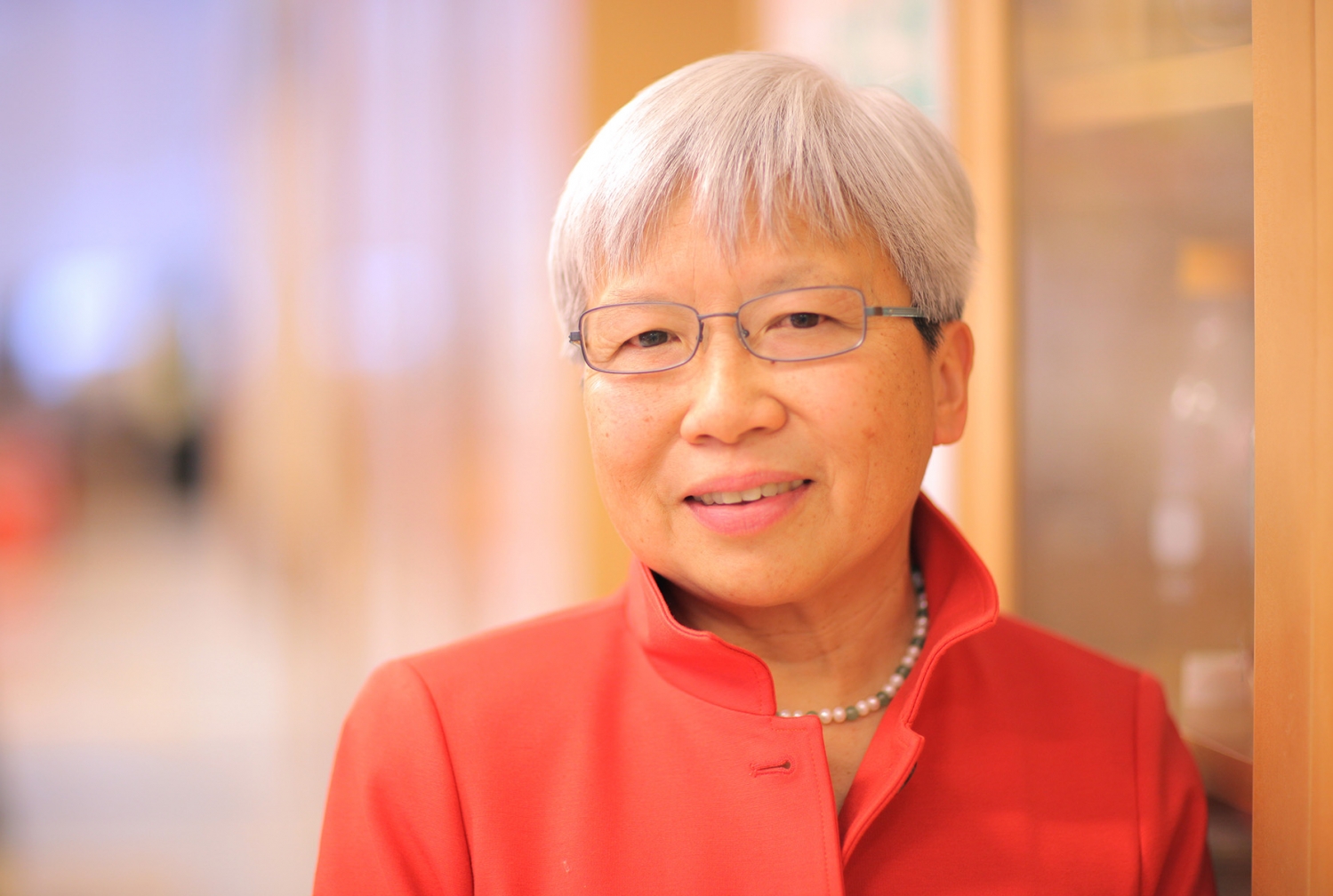Dr. Hazel Szeto was ready to hang up her lab coat.
She had dedicated her entire career to Weill Cornell, first as a medical student and then as a pharmacology researcher and professor, and was excited for what was to come next: motherhood. She and her husband had adopted a little girl, Emily, from China, and when they returned home, Dr. Szeto was sure her research would be done.
Then she had an epiphany.
Dr. Szeto discovered that a water-soluble chain of four amino acids she created with a colleague as a research tool to study opioid receptors actually penetrated cells and targeted mitochondria, the cells' powerhouse. In the years since, Dr. Szeto and her collaborators around the world have developed an analog of this peptide — a compound long considered unsuitable for drug development because of that solubility — into a new class of drugs that in preclinical trials have shown promise in treating acute coronary syndrome, stroke, diabetic vision loss, heart failure, muscle atrophy and neurodegenerative diseases.
"We were really shocked when we found that this small peptide gets right into cells," she said. "So the last 10 years have really been an adventure into the unknown."
They have also been exciting. Stealth Peptides, a biopharmaceutical company founded by Dr. Szeto, has been exploring how the first drug candidate, known as Bendavia, might benefit patients.

Dr. Hazel Szeto with her daughter, Emily. Credit: Hazel Szeto
A four-country, multi-site Phase 2 clinical trial testing an intravenous form of Bendavia as a way to prevent damage to heart tissue after cardiac stenting is just about done, with a Phase 3 trial in the planning stages. The Mayo Clinic is testing the drug for treating renal artery stenosis, in which the narrowing of the renal artery prevents blood flow to the kidney. An eye drop formulation will be tested in clinical trials for diabetic retinopathy this year, as will an oral formulation to treat heart failure.
Dr. Szeto calls her discovery of Bendavia "dumb luck," but the way she's translated this breakthrough into potential therapeutics was hardly a lark. Though unorthodox, her decisions to publish the structure of Bendavia, and launch a hybrid academic-industry partnership to develop it are challenging conventional wisdom about what causes disease and suggesting an alternative route to traditional pharmaceutical development.
In her very first paper on her discovery, Dr. Szeto made the entire structure of Bendavia available to other scientists.
"When I started talking to potential investors, they were horrified that I had done that," she said. "The fear is that other people will make it, test it, and say something bad about it. But I truly believe in open source. I published it not realizing it was a bad idea, but over the years I have decided it was the best idea, because anyone could do research on the compound. And people have done exactly that and now it's the one of the most validated drug compounds in development."
That mounting evidence challenges the paradigm for understanding the underpinnings of disease. Traditionally, researchers identify different mechanisms in the body that play a role in a specific disease — a mutated gene or an over- or under-expressed protein, for example — and develop therapeutics that target and fix them.

Dr. Szeto in the lab with graduate students (from left) Bonnie Quach, Wesley Chao and Bill Mills. Credit: John Abbott
But Dr. Szeto hypothesizes that there is actually a common thread that binds together seemingly disparate diseases. That thread is mitochondria, which produce the cellular fuel ATP that is necessary for the body to function.
She likens mitochondria to a power plant that produces the electricity that keeps the lights on. There are "blackout" diseases, like heart attack and stroke, where tissue dies because the power turns off. But when there is a "brownout," mitochondria are creating enough energy to keep tissue alive, but too little to maintain normal body function. Dr. Szeto posits that diseases like Alzheimer's and Parkinson's, liver and kidney failure, heart disease, diabetes and macular degeneration are, in fact, due to mitochondrial dysfunction and bioenergetics failure.
"If my idea is correct, if I were able to find a way to fix mitochondria to make them more efficient, I may not be able to cure these people, perhaps, but I might improve the quality of life for people with these diseases," she said.
In 2006, Dr. Szeto took an unusual step in academic research by starting Stealth Peptides to develop Bendavia. (The drug is named in honor of Carl Benda, who first coined the term mitochondria.) The company's corporate operations are based in Newton, Mass., where the company's CEO and chief medical officer manage its portfolio of clinical trials. But the scientific investigations take place mostly in Dr. Szeto's lab, which has three full-time employees and three graduate students, and in the labs of her collaborators. They recently published a series of papers revealing the mitochondrial target and the mechanisms by which Bendavia improves bioenergetics.
Even today, Dr. Szeto can't exactly pinpoint how she came to realize her epiphany. Maybe she was more relaxed, allowing her to think more outside the box, she guesses. Maybe she no longer worried about writing papers and getting grants funded, and was willing to be led by her unexpected experimental results. Maybe it was because she saw the world differently, through the eyes of a mother. Maybe it was just dumb luck.
All she knows is this: "It is really Emily's doing," she said.

